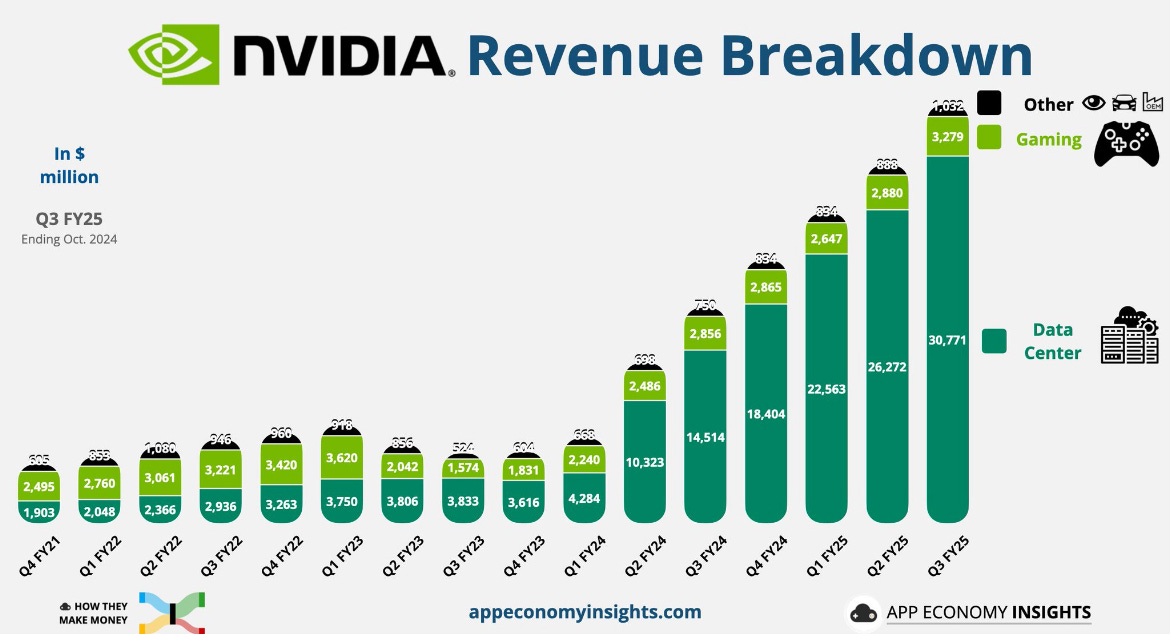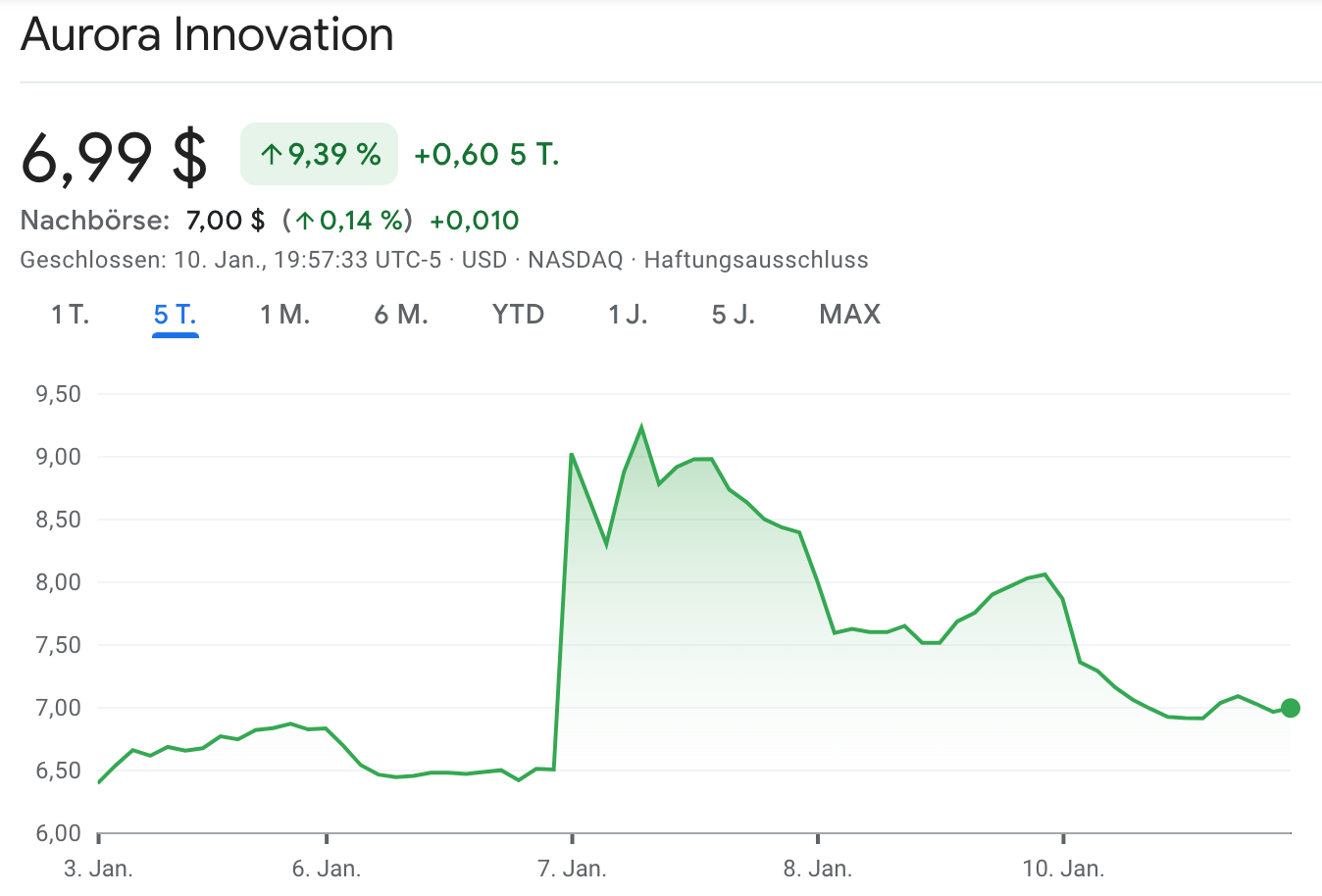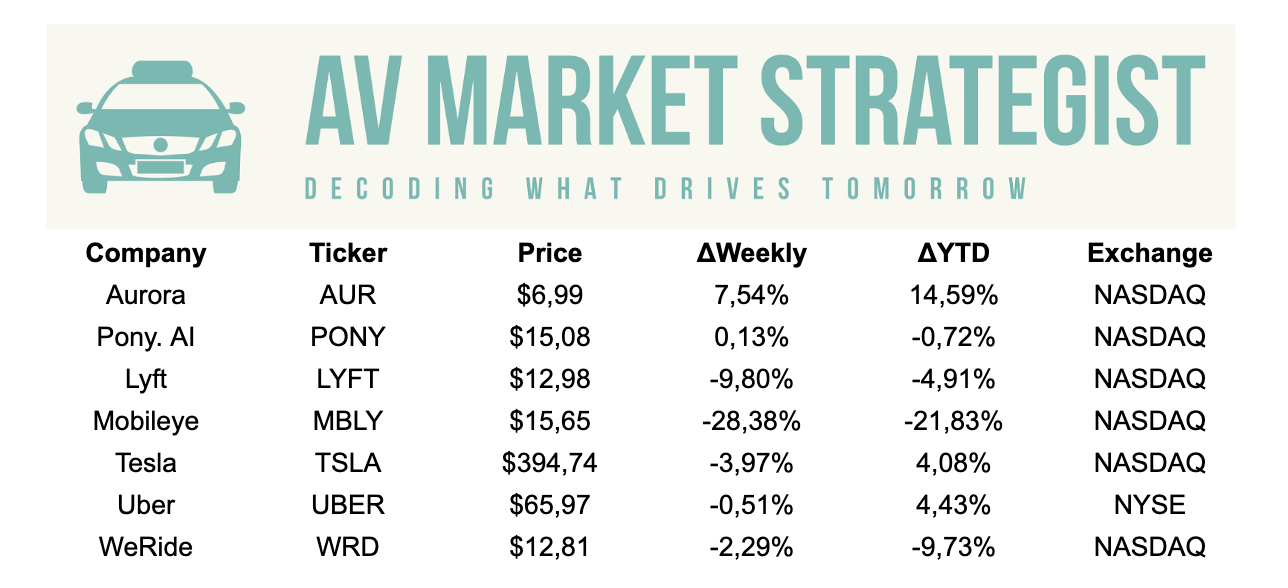👋 Hello!
Today is January 13, 2025, and as CW3 kicks off, let's explore the significant developments that shaped the autonomous vehicle industry this past week.
Today's newsletter has 1,800 words and takes about 9 minutes to read.
🚗Autonomous Vehicles the Multi-Trillion Dollar Opportunity
The autonomous vehicle industry has found its footing. With Waymo demonstrating real success in San Francisco and Tesla advancing its robotaxi plans, the sector's progress was clearly evident at CES 2025. NVIDIA CEO Jensen Huang captured this momentum in his keynote, declaring that autonomous vehicles "will be the first multitrillion-dollar robotics industry."
"After so many years, with Waymo and Tesla's success, it's very clear autonomous vehicles have finally arrived," Huang emphasized, articulating what many industry observers have begun to recognize. The sentiment at the Las Vegas Convention Center reflected this shift - gone was the speculative hype of previous years, replaced by concrete achievements and practical implementation strategies.
But this wasn't just bold talk. NVIDIA backed up Huang's vision with a series of strategic partnerships. The most significant was the agreement with Aurora Innovation and Continental to integrate NVIDIA's DRIVE Thor platform into Aurora's autonomous trucking system. This partnership aims to bring updated self-driving semi trucks to roads by 2027, with each company bringing crucial expertise: NVIDIA's AI hardware and software, Aurora's self-driving software, and Continental's automotive-grade integration capabilities.
Huang's confidence is reflected in NVIDIA's financial projections: he expects automotive hardware and software revenue to reach US$5 billion in fiscal 2026, up from an expected US$4 billion this year. This 25% year-over-year growth in the automotive segment, while still representing only a small fraction of NVIDIA's total revenue, signals the company's increasing commitment to the autonomous vehicle market.
Image Credits: APP ECONOMY INSIGHTS
The market's reaction was immediate. Aurora's stock surged almost 30% following the announcement, with Canaccord analyst George Gianarikas raising his price target from $7 to $10 while the stock later settled with a 4% decline to $8.06 on Wednesday and is now down to $6.99, the overall sentiment remained strongly positive.
NVIDIA's influence extended beyond trucking, with Toyota selecting their technology to power its next-generation autonomous vehicles, and a new partnership with Uber aimed at accelerating autonomous driving deployment. These moves position NVIDIA as the potential standard-bearer for autonomous vehicle computing platforms.
Notably absent from this year's CES were automakers. However, this gap was filled by a robust showing from autonomous vehicle specialists. The CES 2025 showcased several developments in the autonomous vehicle space. Beyond NVIDIA's announcements, key developments included:
May Mobility unveiling a new electric autonomous minibus
John Deere expanding its autonomous vehicle lineup with new agricultural solutions and an autonomous dump truck
Waymo displaying its largest-ever exhibit, featuring the Zeekr RT
Multiple AV startups including Applied Intuition, Tier IV, Polymath Robotics, and Zoox showcasing their latest technologies
This array of announcements and demonstrations highlights how autonomous technology is expanding beyond traditional automotive applications into various sectors, from agriculture to mining to public transportation. It also shows the industry's shift toward practical implementations and real-world solutions, rather than conceptual demonstrations.
Yet challenges remain. Even industry leader Waymo recently faced operational issues, including an incident where a customer got stuck in one of their robotaxis. However, the industry's response to such setbacks has evolved. Rather than triggering existential debates about feasibility, these incidents are now viewed as expected hurdles in the path to commercialization.
The mood at CES reflected this matured perspective - excited but grounded, optimistic but realistic. Gone was the unchecked hyperbole of six or seven years ago, replaced by concrete partnerships, clear technological roadmaps, and practical implementation strategies.
Bottom line: The autonomous vehicle industry showed at CES 2025 that it has finally bridged the gap between potential and practice. With NVIDIA consolidating its position as a central technology provider and companies like Waymo, Aurora, and TIER IV demonstrating real-world implementations, the industry is moving from development to deployment. The question is no longer if autonomous vehicles will become mainstream, but rather how quickly the industry can scale while maintaining safety and reliability.
🔗 Financial Times / Forbes / TechCrunch (1) / TechCrunch (2) / TechCrunch (3) / The Verge
💡 Quick Takes:
🚚 Torc Robotics Launches Strategic Autonomous Truck Hub
Torc Robotics has signed a lease for an 18-acre facility in Dallas-Fort Worth's AllianceTexas development, marking a significant expansion of its autonomous trucking operations. The hub, featuring 22,000 square feet of office space, will include a customer experience center and fleet management control centers. Located along the crucial Dallas-Laredo freight corridor, which handles over 15,000 daily truck crossings and $320B in annual trade, the facility positions Torc strategically for its planned 2027 commercialization. The company is also expanding in Michigan, with plans to hire 100+ employees in Ann Arbor.
🔗 TORC / 📱LinkedIN Analysis
📱 Trump Administration Could Accelerate AV Development
U.S. self-driving car companies are positioning themselves for potential regulatory tailwinds under a second Trump administration. Industry leaders are advocating for policies that could accelerate autonomous vehicle deployment while maintaining safety standards. This development comes as the sector seeks clearer federal guidelines for autonomous vehicle testing and deployment.
🔗 Reuters
🚌 TIER IV Achieves Level 4 Milestone in Japan
TIER IV has secured a permit for Level 4 autonomous operations in Shiojiri, Nagano Prefecture. The certification, obtained under both the Road Transport Vehicle Act and Road Traffic Act, allows their autonomous minibus to operate on public roads shared with pedestrians and traffic. This development marks a significant step forward in addressing Japan's driver shortage crisis and demonstrates TIER IV's growing influence in real-world autonomous deployments.
🔗 TIER IV / 📱LinkedIN Analysis
📱 Vay Accelerates Las Vegas Operations
Vay is significantly expanding its teleoperated car-sharing service in Las Vegas, announcing plans to grow its fleet to 100 vehicles. Since launching in January 2024, the company has facilitated over 6,000 trips in central Las Vegas using retrofitted Kia e-Niro vehicles. The Berlin-based startup is also venturing into B2B operations, planning to provide remote driving services for private cars, trucks, and vans. This expansion, supported by a €34 million investment from the European Investment Bank, includes a new production facility.
🔗 TechCrunch
🚚 EACON Mining Hits 800 Autonomous Trucks Milestone
EACON Mining has deployed over 800 autonomous haulage trucks across 19 projects, covering more than 27 million kilometers. Their fleet, comprising 14 different models from six OEMs including Yutong and SANY, is 99% low-emission vehicles. The company's ORCASTRA® autonomous haulage solution has enabled rapid deployment capabilities, with some sites achieving full autonomy in just two weeks. This development signals a major advancement in mining automation and sustainability.
🔗 International Mining
🚛 Aurora Takes DOT to Court Over Autonomous Truck Safety Rules
Aurora Innovation is challenging the U.S. Department of Transportation in court over safety regulations for disabled autonomous trucks. At issue is how to warn other motorists when a driverless truck stops on the highway shoulder. Aurora and Waymo proposed using ultra-bright, cab-mounted beacons, but FMCSA rejected this alternative to the traditional requirement of placing physical warning triangles on the road. While this won't delay Aurora's planned April launch, it highlights the growing tension between innovation and outdated regulations in the autonomous vehicle sector.
🔗 Axios
📺 Worth Watching
NVIDIA CEO Jensen Huang Keynote at CES 2025
🔗 YouTube
Waymo's Mawakana on Autonomous Driving Expansion Plans
🔗 Bloomberg Television
📊 Weekly Performance
Note: Stock performance data as of January 12, 2025. Past performance does not indicate future returns.
Thanks for reading!






